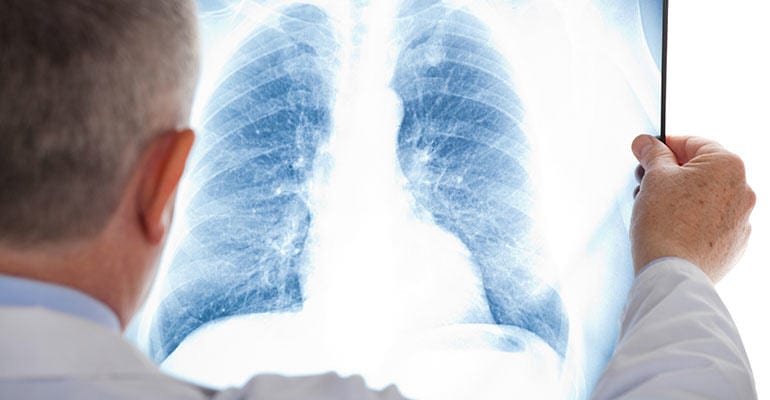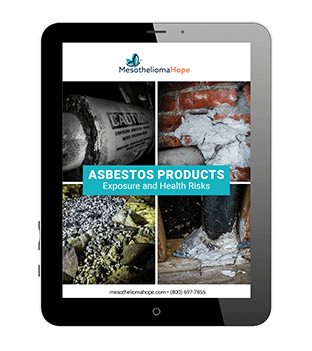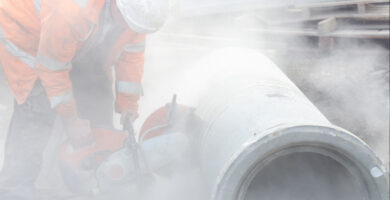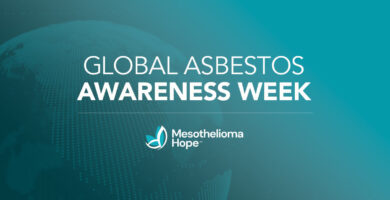Straight Talk about Mesothelioma, a blog series created by Michael T. Milano, M.D., Ph.D., a radiation oncology specialist, as a resource for mesothelioma patients and their loved ones.
No matter what form of cancer a person is diagnosed with, the general consensus among medical experts is that early detection plays a vital role in prognosis and quality of life. When cancer is caught early, there are usually more treatment options available to prevent it from spreading and causing any more damage.
Early detection, however, is something that lung cancer and mesothelioma seem to avoid. These cancers can both take decades to fully develop, and while they do, patients may have no symptoms, or symptoms that are similar to those of the flu or common cold. Once it becomes abundantly clear that a person is not well and dealing with something much more serious, it is – sadly – often too late.
A Life-or-Death Game of Hide-and-Seek
Responsible for 27 percent of all cancer deaths in the US, lung cancer is the leading cause of cancer death among both men and women. According to the American Cancer Society (ACS), more people die from lung cancer than from colon, breast, and prostate cancers combined.
“Lung cancers, like many other cancers, take many years if not decades to develop and so you could have a small nodule that could be sitting in the lungs for many years without any symptoms going on until at some point when the tumor gets large enough to finally cause symptoms. That’s not uncommon,” said Dr. Brian Lawenda in an interview with the Las Vegas Review-Journal. Lawenda is a board-certified radiation oncologist and the Clinical Director of 21st Century Oncology, a facility based out of St. Petersburg, Florida.
Mesothelioma victims encounter a similar problem. While far fewer people are diagnosed every year — approximately 3,200 compared to 221,200 new cases of lung cancer — the prognosis for mesothelioma patients can be even grimmer overall. Most mesothelioma patients never go into remission, and only 10 percent live for 5 years after their initial diagnosis. A big reason for this is because mesothelioma can take 20-50 years to develop and once symptoms begin to appear, the cancer is already progressing into a more advanced stage.
Early symptoms of lung cancer and mesothelioma that can be easy to brush off, or attribute to something else, include:
- A persistent cough
- Hoarseness of voice
- Shortness of breath
- Feeling tired
- Weight loss
- Chest pain that gets worse with deep breathing, coughing, or laughing
So, how are people supposed to find lung cancer or mesothelioma in the early stages if the symptoms aren’t always totally clear? Doctors recommend getting ahead of the symptoms with regular screenings.
Screenings for High-Risk Individuals Aid in Early Detection of Lung Cancer & Mesothelioma
The concept of cancer screenings is not new. Over the years, certain screenings have become very common, like mammograms for early breast cancer detection, colonoscopies for early colon and rectal cancer detection, and Pap tests for early cervical cancer detection. Screenings for lung cancer (becoming more common) and mesothelioma (less common) are finally working their way into the mainstream. The right way to detect lung cancer and mesothelioma, however, does not involve an X-ray.
“Most people are obtaining chest X-rays. The main way to identity these lesions is to get a CAT scan. And many people just don’t understand that — primary care physicians and patients, alike,” said Dr. Raja Flores, professor and Chairman for the Department of Thoracic Surgery at Mount Sinai Hospital, in an interview with Mesothelioma Hope. “The CAT scan will show you things that you won’t see in an X-ray. The X-ray will miss meso, the X-ray will miss lung cancer at the earliest stages when it can be cured.”
Dr. Flores also noted that too many people think that they only need to schedule a screening once they begin to have lung cancer or mesothelioma symptoms. But they should know that once symptoms develop, it is no longer considered “a screening” — a screening occurs before there are signs that something may be wrong.
“Screening is when you have an asymptomatic patient who you know is at a high risk. Smoke, asbestos exposure, family history, radon exposure — those are the main things that should trigger someone to get a CAT scan,” said Dr. Flores. “And nowadays CAT scans can be performed with the same amount of radiation as a mammogram, so I don’t see any reason not to do it.”
Currently, CAT (also called CT) scans are primarily being used to screen high-risk smokers who are between the ages of 55 and 74, are in good health, and have a 30-pack-a-year smoking history and are either still smoking, or have quit within the last 15 years.
Although CT scans are not very common for mesothelioma patients yet, individuals who know they’ve been exposed to asbestos should stay on top of their symptoms and keep an open line of communication with their doctor. Any high-risk individual needs to advocate for themselves and do everything they can to ensure any cancers they may develop are detected as early as possible.










